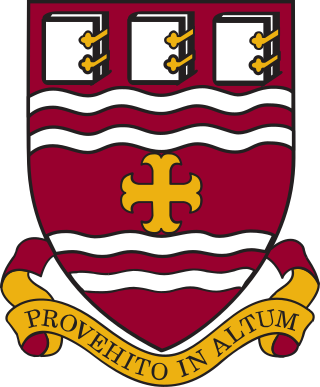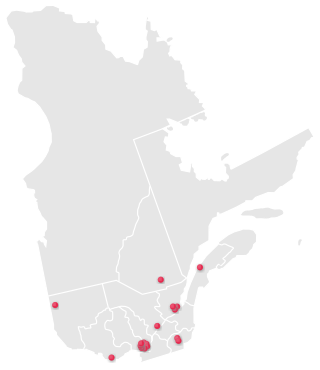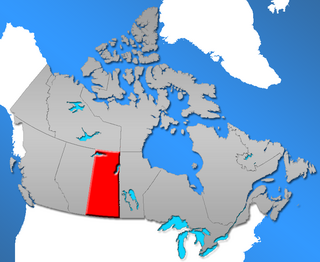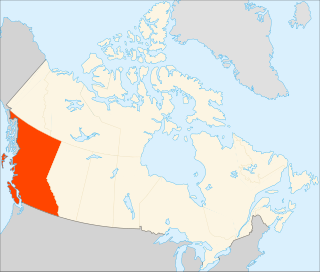
Education in Canada is for the most part provided publicly, funded and overseen by federal, provincial, and local governments. Education is within provincial jurisdiction and the curriculum is overseen by the province. Education in Canada is generally divided into primary education, followed by secondary education and post-secondary. Education in both English and French is available in most places across Canada. Canada has a large number of universities, almost all of which are publicly funded. Established in 1663, Université Laval is the oldest post-secondary institution in Canada. The largest university is the University of Toronto with over 85,000 students. Four universities are regularly ranked among the top 100 world-wide, namely University of Toronto, University of British Columbia, McGill University, and McMaster University, with a total of 18 universities ranked in the top 500 worldwide.

Memorial University, or MUN, is a public research university in the province of Newfoundland and Labrador, based in St. John's, with satellite campuses in Corner Brook, Happy Valley-Goose Bay, Saint Pierre, and Harlow, England. Memorial University offers certificate, diploma, undergraduate, graduate, and post-graduate programs, as well as online courses and degrees.
Tuition freeze is a government policy restricting the ability of administrators of post-secondary educational facilities to increase tuition fees for students. Although governments have various reasons for implementing such a policy, the main reason cited is improving accessibility for working- and middle-class students. A tuition fee freeze is a common political goal of the Canadian student movement, especially the Canadian Federation of Students.

Kathleen Mary Margaret "Kathy" Dunderdale is a politician and former MHA who served as the tenth premier of Newfoundland and Labrador from December 3, 2010, to January 24, 2014. Dunderdale was born and raised in Burin; before entering politics she worked in the fields of community development, communications, fisheries and social work. Her first foray into politics was as a member of the Burin town council, where she served as deputy mayor. She was also a Progressive Conservative Party (PC) candidate in the 1993 general election and served as President of the PC Party.

Memorial University of Newfoundland Students' Union, is an undergraduate student union located in St. John's, Newfoundland and Labrador, Canada. It is the official student government representing the students of Memorial University of Newfoundland, St. John's Campus. Membership in the union is automatic and totals around 11,500 undergraduate students. MUNSU is local 35 of the Canadian Federation of Students, one of the national organizations of student unions in Canada. MUNSU is one of very few students' unions in Canada to be directly recognized in provincial legislation as the official representatives of the student body.

Higher education in Ontario includes postsecondary education and skills training regulated by the Ministry of Colleges and Universities and provided by universities, colleges of applied arts and technology, and private career colleges. The current minister is Jill Dunlop who was appointed in June 2021. The ministry administers laws covering 22 public universities, 24 public colleges, 17 privately funded religious universities, and over 500 private career colleges. 18 of the top 50 research universities in Canada are in Ontario.

Higher education in Canada includes provincial, territorial, Indigenous and military higher education systems. The ideal objective of Canadian higher education is to offer every Canadian the opportunity to acquire the skills and knowledge necessary to realize their utmost potential. It aspires to cultivate a world-class workforce, enhance the employment rate of Canadians, and safeguard Canada's enduring prosperity. Higher education programs are intricately designed with the perspective of the learner in focus, striving to mitigate risks and assure definite outcomes.

Higher education in Quebec differs from the education system of other provinces in Canada. Instead of entering university or college directly from high school, students in Quebec leave secondary school after Grade 11, and enter post-secondary studies at the college level, as a prerequisite to university. Although both public colleges (CEGEPs) and private colleges exist, both are colloquially termed CEGEPs. This level of post-secondary education allows students to choose either a vocational path or a more academic path.
Higher education in Manitoba includes institutions and systems of higher or advanced education in the province of Manitoba.

Historically, Saskatchewan's higher education system has been "significantly shaped" by demographics. In 1901, six years prior to the 1907 founding of a university in Saskatchewan, the urban population in Saskatchewan was 14,266 (16%) while the rural population was 77,013 (84%). One hundred years later, the proportions had changed significantly: urban population in 2001 was 629,036 (64%) while the rural population was 349,897 (36%). Over time the province's higher education system has changed significantly in response both to this demographic shift and to provincial politics.

Higher education in Alberta refers to the post secondary education system for the province of Alberta. The Ministry of Advanced Education in Alberta oversees educational delivery through universities, publicly funded colleges, technical institutions, and private colleges. These institutions offer a variety of academic and vocational pursuits. Students have access to post-secondary options through most regions of Alberta, and a developed articulation system allows for increased student mobility.

Higher education in Prince Edward Island refers to education provided by higher education institutions in the Canadian province of Prince Edward Island. In Canada, education is the responsibility of the provinces and there is no Canadian federal ministry governing education. Prince Edward Island has two post-secondary institutions authorized to grant degrees: one university, the University of Prince Edward Island, and one college, Maritime Christian College. There are also two community colleges: Holland College, which operates centres across the province, and Collège de l'Île, which offers post secondary education in French. The governing body for higher education in Prince Edward Island is the Department of Innovation and Advanced Learning, headed by the Minister of Innovation and Advanced Learning, the Honourable Allen Roach.

Higher education in New Brunswick refers to education provided by higher education institutions in the Canadian province of New Brunswick. Higher education has a rich history in New Brunswick. The first English-language university in Canada was the University of New Brunswick. Mount Allison University was the first in the British Empire to award a baccalaureate to a woman, Grace Annie Lockhart, B.Sc. in 1875. Education is the responsibility of the provinces in Canada and there is no federal ministry governing it.

Higher education in Nova Scotia refers to education provided by higher education institutions. In Canada, education is the responsibility of the provinces and there is no Canadian federal ministry governing education. Nova Scotia has a population of one million people, but is home to ten public universities and the Nova Scotia Community College, which offers programs at 13 locations.

Higher education in British Columbia is delivered by 25 publicly funded institutions that are composed of eleven universities, eleven colleges, and three institutes. This is in addition to three private universities, five private colleges, and six theological colleges. There are also an extensive number of private career institutes and colleges. Over 297,000 students were enrolled in post-secondary institutions in British Columbia in the 2019-2020 academic year.
Atlantic Federation of Students (AFS) was an Atlantic Canadian student organization existing from January 1975 to November 1978.
The National Union of Students, Union nationale des étudiants (NUS/UNE) was a national university and college student organization in Canada from November 1972 to May 1981. The Union represented over 350,000 students in post secondary education. Donald Thompson, Sidney Shugarman, Pierre Ouellette, Myron Tiechko, Daniel Palmer, Dawn Hassett, Doyle Brown and Ian Boothe are listed as the first directors.
The Research & Development Corporation (RDC) was a Crown corporation of the Government of Newfoundland and Labrador created to improve the province's research and development performance.
Grenfell Campus, formerly Sir Wilfred Grenfell College, is a campus of the Memorial University of Newfoundland (MUN). It is located in the city of Corner Brook, Newfoundland and Labrador, Canada. The campus has approximately 1,300 students enrolled in degree programs for the arts, education, fine arts, science, resource management and nursing. Many students from around the province also attend the school for the first- and second-year course offerings before transferring to Memorial University's larger campus in St. John's.
Dale Kirby is a politician who served in the Newfoundland and Labrador House of Assembly from 2011 to 2019.














